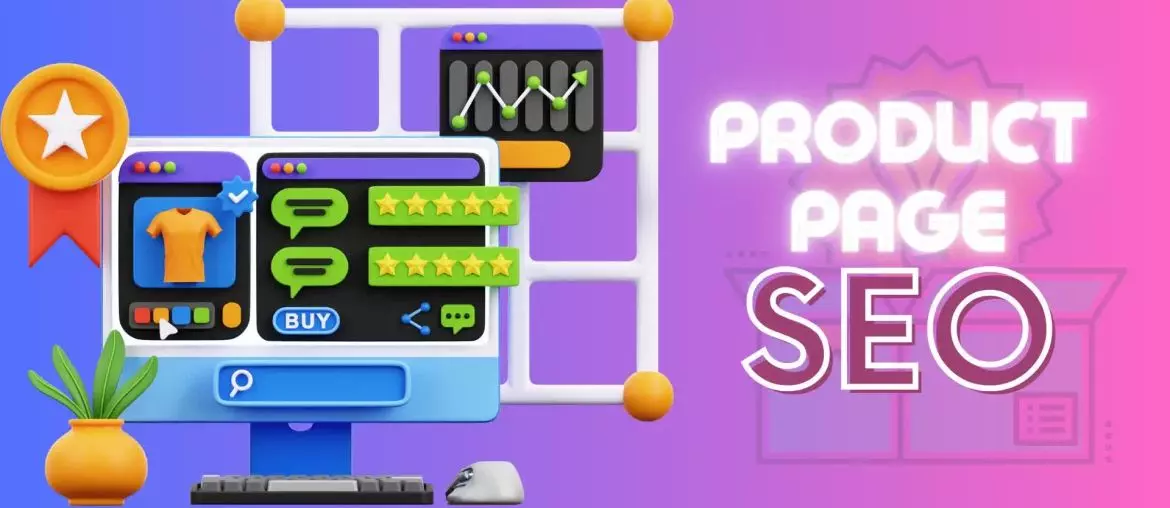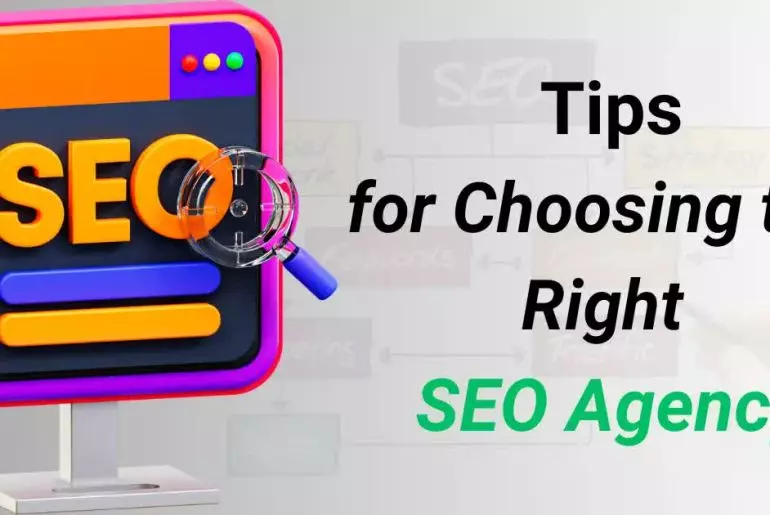Product page SEO is a crucial aspect of any e-commerce website. It involves optimizing individual product pages to rank higher in search engine results pages (SERPs) and attract more organic traffic. By optimizing product pages for SEO, businesses can improve their visibility, increase their chances of being discovered by potential customers, and ultimately boost their sales.
Understanding Product Page SEO is the first step towards optimizing product pages for search engines. It involves identifying relevant keywords, creating high-quality content, optimizing the page title and meta description, and ensuring that the page is user-friendly and easy to navigate. Additionally, optimizing product images, adding customer reviews and ratings, and providing detailed product descriptions can also help improve product page SEO.
Key Takeaways
- Optimizing product pages for SEO is crucial for improving visibility and driving organic traffic to e-commerce websites.
- Understanding Product Page SEO involves identifying relevant keywords, creating high-quality content, and optimizing the page title and meta description.
- Additional strategies for optimizing product page SEO include optimizing product images, adding customer reviews and ratings, and providing detailed product descriptions.
Understanding Product Page SEO
Product page SEO is an essential part of any e-commerce strategy. It involves optimizing individual pages of your e-commerce website to rank higher on search engine results pages (SERPs). This optimization can increase the visibility of your products on SERPs and make it easier for potential customers to find them.
Importance of SEO for E-Commerce
SEO is crucial for e-commerce sites because it helps to drive traffic to your site and increase sales. If your products are not visible on SERPs, potential customers will not be able to find them. SEO can help to improve the visibility of your products, making it easier for customers to find them and increasing the chances of making a sale.
Basics of On-Page SEO
On-page SEO is the practice of optimizing individual pages of your website to rank higher on SERPs. It involves several factors, including:
- Title tags and meta descriptions
- Header tags
- URL structure
- Image optimization
- Internal linking
- Content optimization
By optimizing these factors, you can improve the visibility of your product pages on SERPs and increase the chances of making a sale.
Keyword Research for Product Pages
Keyword research is an essential part of any SEO strategy. It involves identifying the keywords and phrases that potential customers are using to search for products like yours. By targeting these keywords, you can improve the visibility of your product pages on SERPs and increase the chances of making a sale.
When conducting keyword research for product pages, it’s important to focus on long-tail keywords. These are longer, more specific phrases that are less competitive than shorter, more general keywords. By targeting long-tail keywords, you can improve the visibility of your product pages on SERPs and increase the chances of making a sale.
In conclusion, product page SEO is crucial for e-commerce sites. By optimizing individual pages of your website, targeting the right keywords, and following best practices for on-page SEO, you can improve the visibility of your products on SERPs and increase the chances of making a sale.
Optimizing Page Content
When it comes to product page SEO, optimizing page content is crucial. The following subsections will provide some tips for writing compelling product descriptions, using high-quality images, and incorporating product reviews.
Writing Compelling Product Descriptions
Writing compelling product descriptions is essential for engaging potential customers and improving SEO. When writing product descriptions, it’s important to keep the following in mind:
- Use descriptive, keyword-rich language that accurately reflects the product.
- Highlight the product’s unique features and benefits.
- Keep the tone of voice consistent with the brand’s overall messaging.
- Use bullet points or lists to break up the text and make it easier to read.
Using High-Quality Images
Using high-quality images can help to improve the overall user experience and boost SEO. When selecting images for product pages, it’s important to:
- Use high-resolution images that clearly show the product.
- Use multiple images to show different angles and features of the product.
- Optimize images for web use to ensure fast page load times.
- Use descriptive file names and alt tags to help search engines understand the content of the image.
Incorporating Product Reviews
Incorporating product reviews can help to build trust with potential customers and improve SEO. When incorporating product reviews, it’s important to:
- Use a review platform that is trusted and reputable.
- Encourage customers to leave reviews by offering incentives or making it easy to leave a review.
- Respond to both positive and negative reviews in a professional manner.
- Use schema markup to display review ratings in search results.
Technical SEO Elements
Optimizing the technical elements on a product page is crucial for improving its visibility on search engines. Technical SEO elements include optimizing URL structures, leveraging schema markup, and improving page load speed.
Optimizing URL Structures
URL structures play a vital role in the ranking of a product page. A well-structured URL can help search engines understand the content of the page, which can lead to higher rankings. It is recommended to keep the URL short, descriptive, and relevant to the content of the page. Including the target keyword in the URL can also help in improving its visibility on search engines.
Leveraging Schema Markup
Schema markup is a code that is added to a product page to help search engines understand the content of the page. It provides additional information about the product, such as its price, availability, and reviews. This additional information can help search engines display rich snippets, which can lead to higher click-through rates. It is recommended to use schema markup on all product pages to improve their visibility on search engines.
Improving Page Load Speed
Page load speed is a crucial factor in the ranking of a product page. A slow-loading page can lead to a higher bounce rate, which can negatively impact its visibility on search engines. It is recommended to optimize the images, compress the code, and use a content delivery network (CDN) to improve the page load speed. Google’s PageSpeed Insights tool can be used to identify the issues that are affecting the page load speed and provide recommendations to improve it.
By optimizing the technical SEO elements on a product page, it can improve its visibility on search engines, which can lead to higher traffic and sales.
Mobile Optimization
When it comes to product page SEO, mobile optimization is crucial. With more and more people accessing the internet through their mobile devices, it’s important to ensure that your product pages are optimized for mobile users.
Responsive Design for Product Pages
One of the best ways to optimize your product pages for mobile is to use responsive design. Responsive design ensures that your website adapts to any device a user uses. Whether it’s a smartphone or tablet, your audience will get the best mobile experience for their device.
With responsive design, you don’t need to create a separate mobile version of your website. Instead, your website will adjust to fit the screen size of the device being used. This means that your product pages will look great on any device, without any extra work on your part.
Accelerated Mobile Pages (AMP)
Another way to optimize your product pages for mobile is to use Accelerated Mobile Pages (AMP). AMP is an open-source framework that allows you to create mobile-friendly pages that load quickly.
AMP pages are designed to be lightweight and fast-loading, which is perfect for mobile users who are often on the go. By using AMP, you can provide your mobile users with a fast, seamless experience that will keep them engaged with your product pages.
However, it’s important to note that AMP pages may not be suitable for all types of content. If you have complex product pages with lots of images or videos, AMP may not be the best option. It’s always important to test your product pages on mobile devices to ensure that they are optimized for your audience.
Link Building for Product Pages
Link building is an essential part of SEO, and it is equally important for product pages. Product pages need links just like any other page on the website to rank higher on the search engine results page (SERP). In this section, we will discuss internal linking strategies and earning backlinks for product pages.
Internal Linking Strategies
Internal linking is the process of linking one page of a website to another page of the same website. It is an effective way to distribute the link equity of a website and help search engines understand the structure of the website. Internal linking also helps users navigate through the website and discover related content.
When it comes to product pages, internal linking is crucial for two reasons. Firstly, it helps search engines understand the importance of the product page in the website’s hierarchy. Secondly, it helps users navigate through related product pages and find the products they are interested in.
Here are some internal linking strategies for product pages:
- Related Products: Link to related products on the product page to help users discover other products they might be interested in.
- Category Pages: Link to category pages from the product page to help users navigate through related products and categories.
- Homepage: Link to the homepage from the product page to help search engines understand the importance of the product page in the website’s hierarchy.
Earning Backlinks
Backlinks are links from other websites that point to your website. They are an essential part of SEO and help search engines understand the importance and relevance of a website. Backlinks also help drive traffic to a website and increase its visibility on the SERP.
When it comes to product pages, earning backlinks can be challenging. Most websites tend to link to the homepage or category pages instead of individual product pages. However, there are still some ways to earn backlinks for product pages:
- Product Reviews: Encourage customers to write product reviews and link back to the product page.
- Influencer Marketing: Partner with influencers in your niche and ask them to link back to the product page in their content.
- Guest Blogging: Write guest blog posts for other websites and include a link back to the product page in the author bio or content.
In conclusion, link building is an essential part of product page SEO. Internal linking helps search engines understand the importance of the product page in the website’s hierarchy and helps users navigate through related products and categories. Earning backlinks can be challenging, but it is still possible with the right strategies.
Social Signals and Sharing
Social signals are an important aspect of Product Page SEO. They refer to the engagement metrics such as likes, shares, comments, and follows that your content receives on social media platforms. Social signals are not a direct ranking factor, but they play a significant role in improving your content’s visibility and reach.
Encouraging Social Shares
One way to improve social signals for your product page is to encourage social sharing. You can do this by adding social sharing buttons on your product page. These buttons allow your visitors to share your product page on their social media accounts with just a click of a button. This increases the visibility of your product page on social media platforms and can lead to more engagement and traffic.
Another way to encourage social sharing is to create shareable content. This can include product images, videos, infographics, and other visual content that your visitors would want to share with their followers. You can also create social media posts that promote your product page and encourage your followers to share it with their network.
Integrating Social Media
Integrating social media into your product page can also improve social signals and help with Product Page SEO. You can do this by embedding your social media feeds on your product page. This allows your visitors to see your social media activity and engage with your content without leaving your product page.
Another way to integrate social media is to use social media reviews and testimonials. You can embed social media reviews and testimonials on your product page to showcase social proof and build trust with your visitors. This can also lead to more social shares and engagement.
In conclusion, social signals and sharing are important for Product Page SEO. By encouraging social sharing and integrating social media into your product page, you can improve your content’s visibility and reach, and ultimately drive more traffic and sales.
Monitoring SEO Performance
Monitoring the performance of a product page’s SEO is crucial to ensure that it is effectively reaching its target audience. In this section, we will discuss two essential aspects of monitoring SEO performance: tracking rankings and traffic and using analytics for SEO insights.
Tracking Rankings and Traffic
Tracking rankings and traffic is an essential aspect of monitoring the performance of a product page’s SEO. By tracking rankings, you can determine how well your product page is performing in search engine results pages (SERPs) for specific keywords. This information can help you optimize your product page to improve its ranking for those keywords.
Using tools like SEMrush or Ahrefs, you can track your product page’s ranking for specific keywords and monitor changes over time. Additionally, tracking traffic to your product page can give you valuable insights into how users are finding and interacting with your page. Google Analytics is a powerful tool for tracking traffic to your product page, allowing you to see how many users are visiting your page, how long they are staying, and where they are coming from.
Using Analytics for SEO Insights
Analytics can provide valuable insights into how users are interacting with your product page and how it is performing in search engine results pages. By analyzing data from tools like Google Analytics, you can identify areas for improvement and optimize your product page for better SEO performance.
Some key metrics to monitor in Google Analytics include bounce rate, time on page, and conversion rate. Bounce rate measures the percentage of users who leave your product page without interacting with it. Time on page measures how long users spend on your product page, which can indicate how engaging your content is. Conversion rate measures the percentage of users who take a desired action on your product page, such as making a purchase or filling out a form.
By monitoring these metrics and making adjustments to your product page’s content and design, you can improve its SEO performance and reach a larger audience.
SEO Best Practices and Compliance
Adhering to Search Engine Guidelines
When it comes to optimizing product pages for search engines, it is important to adhere to search engine guidelines to avoid penalties and maintain a good ranking. Search engines like Google have specific guidelines that webmasters should follow to ensure that their websites are optimized in a way that is beneficial for both search engines and users.
One important guideline is to ensure that the website is mobile-friendly. With the increasing number of mobile users, it is essential to optimize product pages for mobile devices. Another important guideline is to have descriptive and unique meta tags for each product page. This will help search engines understand the content of the page and display it correctly in search results.
Avoiding Black-Hat Techniques
Black-hat SEO techniques can lead to penalties and harm the website’s ranking. It is important to avoid these techniques to maintain a good ranking and ensure that the website is not penalized by search engines.
One common black-hat technique is keyword stuffing. This involves adding too many keywords to a product page to manipulate search engine rankings. This can lead to penalties and harm the website’s ranking. Another black-hat technique is cloaking, which involves displaying different content to search engines and users. This can also lead to penalties and harm the website’s ranking.
To avoid black-hat techniques, webmasters should focus on creating high-quality content that is relevant and useful to users. They should also avoid using hidden text or links, and ensure that the website has a clear and easy-to-use navigation system. By following these guidelines, webmasters can ensure that their product pages are optimized for search engines in a way that is beneficial for both search engines and users.
Conclusion
In conclusion, optimizing product pages for search engines is crucial for e-commerce businesses to increase their online visibility and drive more traffic to their website. By following the tips and best practices outlined in this article, businesses can improve their product page SEO and ultimately boost their sales.
One important aspect of product page SEO is ensuring that the page has a clear and concise title that accurately reflects the product being sold. Including relevant keywords in the title can also help improve search engine rankings.
Another key factor is the product description, which should be unique and provide detailed information about the product. This can include features, benefits, specifications, and any other relevant details that can help convince potential customers to make a purchase.
It’s also important to optimize the product images by including descriptive alt tags and file names. This not only helps with SEO but also improves the user experience by providing visually appealing and informative images.
Overall, businesses that prioritize product page SEO can gain a competitive advantage in the e-commerce market and increase their chances of success. By implementing the strategies outlined in this article, businesses can improve their online visibility, attract more customers, and ultimately drive more sales.
Frequently Asked Questions
How can I optimize my product pages for better search engine visibility?
To optimize your product pages for better search engine visibility, you should focus on creating high-quality content that is relevant to your target audience. This includes using descriptive and unique product titles, writing detailed product descriptions, including high-quality images and videos, and optimizing your site’s metadata such as title tags and meta descriptions. Additionally, make sure your site is mobile-friendly and has a fast loading speed.
What are the key elements to include in a product page SEO strategy?
The key elements to include in a product page SEO strategy include keyword research, on-page optimization, and link building. Keyword research involves identifying the keywords and phrases that your target audience is searching for and incorporating them into your product page content. On-page optimization includes optimizing your page titles, descriptions, headings, and content for search engines. Link building involves acquiring high-quality backlinks from other websites to your product pages.
How does the use of SEO keywords impact product listings?
Using SEO keywords in your product listings can help improve your search engine rankings and increase your visibility to potential customers. However, it is important to use keywords in a natural and relevant way, rather than stuffing them into your content unnaturally. This can negatively impact your search engine rankings and make your content difficult to read for users.
What role does a product’s name play in its overall SEO effectiveness?
A product’s name can play a significant role in its overall SEO effectiveness. Using descriptive and unique product names that include relevant keywords can help improve your search engine rankings and make it easier for potential customers to find your products. Additionally, including your brand name in your product names can help improve your brand recognition and increase customer loyalty.
In what ways can I improve my Shopify store’s product SEO?
To improve your Shopify store’s product SEO, you can start by conducting keyword research and optimizing your product titles, descriptions, and metadata. Additionally, make sure your site is mobile-friendly and has a fast loading speed. You can also improve your SEO by creating high-quality content, such as blog posts and videos, that is relevant to your target audience and includes relevant keywords.
Can you provide a step-by-step guide to optimizing a product page for SEO?
- Conduct keyword research to identify the keywords and phrases that your target audience is searching for.
- Optimize your product titles, descriptions, and metadata with relevant keywords.
- Include high-quality images and videos that showcase your products.
- Write detailed product descriptions that include relevant keywords and answer common questions.
- Make sure your site is mobile-friendly and has a fast loading speed.
- Acquire high-quality backlinks from other websites to your product pages.
- Monitor your search engine rankings and make adjustments to your strategy as needed.
 Singapore
Singapore  Singapore
Singapore Malaysia
Malaysia

















Comments are closed.